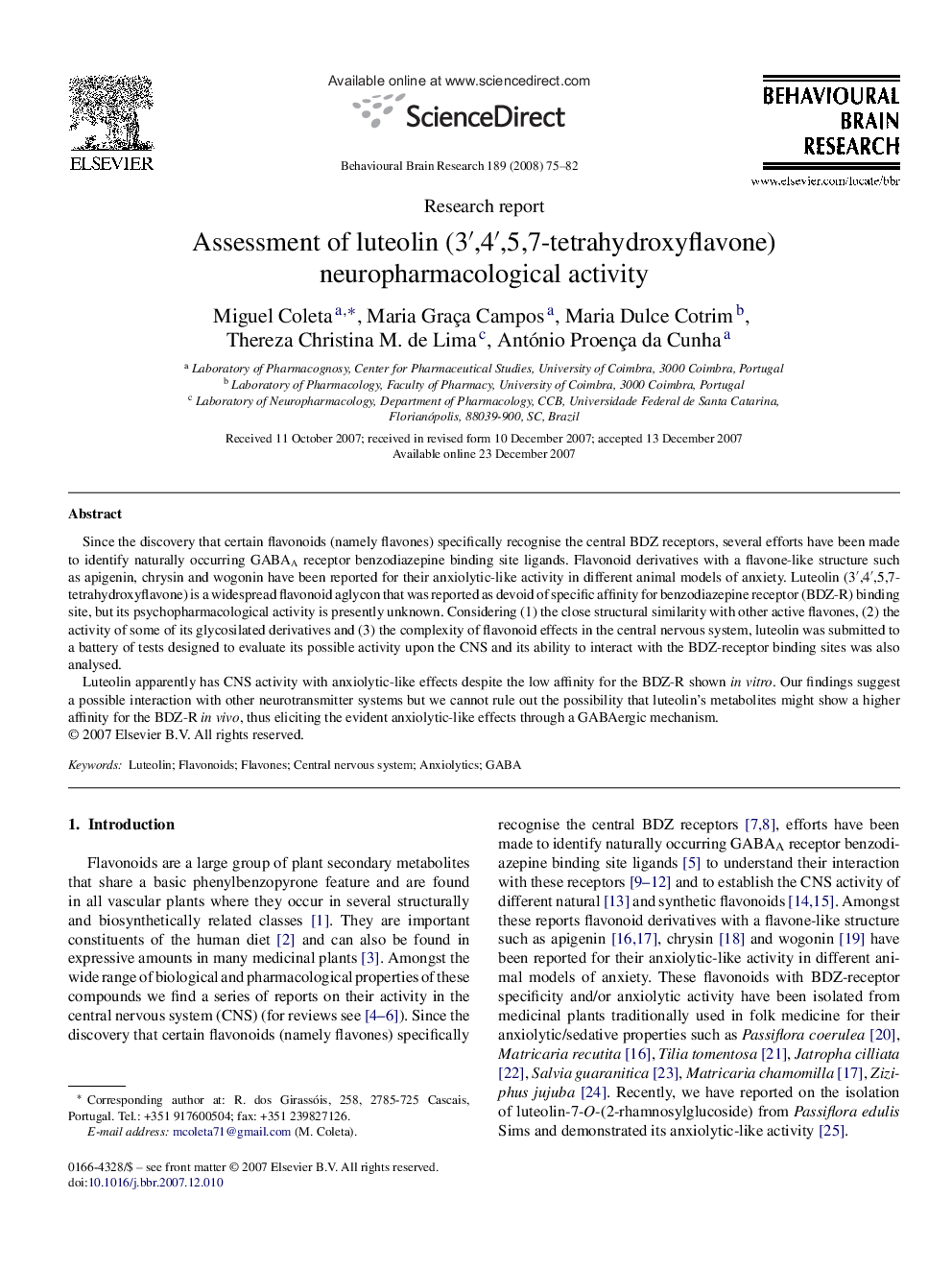| کد مقاله | کد نشریه | سال انتشار | مقاله انگلیسی | نسخه تمام متن |
|---|---|---|---|---|
| 4315279 | 1290071 | 2008 | 8 صفحه PDF | دانلود رایگان |

Since the discovery that certain flavonoids (namely flavones) specifically recognise the central BDZ receptors, several efforts have been made to identify naturally occurring GABAA receptor benzodiazepine binding site ligands. Flavonoid derivatives with a flavone-like structure such as apigenin, chrysin and wogonin have been reported for their anxiolytic-like activity in different animal models of anxiety. Luteolin (3′,4′,5,7-tetrahydroxyflavone) is a widespread flavonoid aglycon that was reported as devoid of specific affinity for benzodiazepine receptor (BDZ-R) binding site, but its psychopharmacological activity is presently unknown. Considering (1) the close structural similarity with other active flavones, (2) the activity of some of its glycosilated derivatives and (3) the complexity of flavonoid effects in the central nervous system, luteolin was submitted to a battery of tests designed to evaluate its possible activity upon the CNS and its ability to interact with the BDZ-receptor binding sites was also analysed.Luteolin apparently has CNS activity with anxiolytic-like effects despite the low affinity for the BDZ-R shown in vitro. Our findings suggest a possible interaction with other neurotransmitter systems but we cannot rule out the possibility that luteolin's metabolites might show a higher affinity for the BDZ-R in vivo, thus eliciting the evident anxiolytic-like effects through a GABAergic mechanism.
Journal: Behavioural Brain Research - Volume 189, Issue 1, 16 May 2008, Pages 75–82